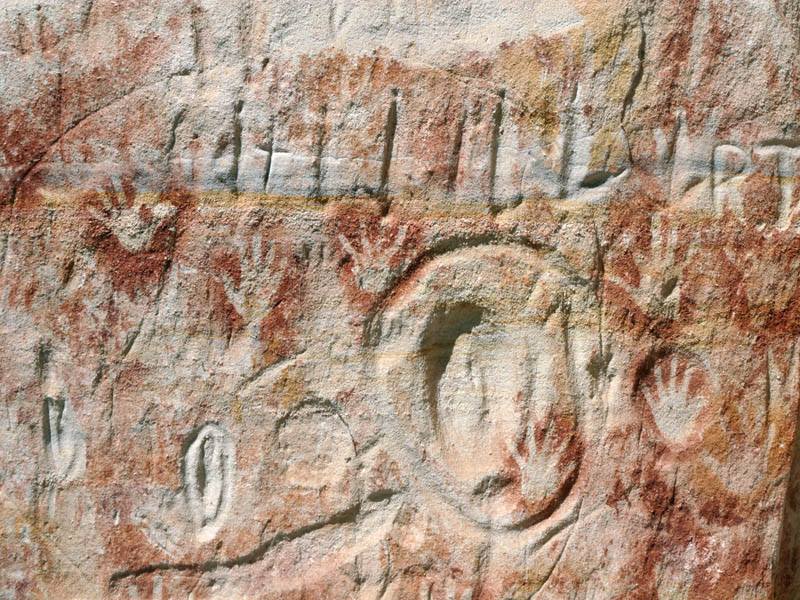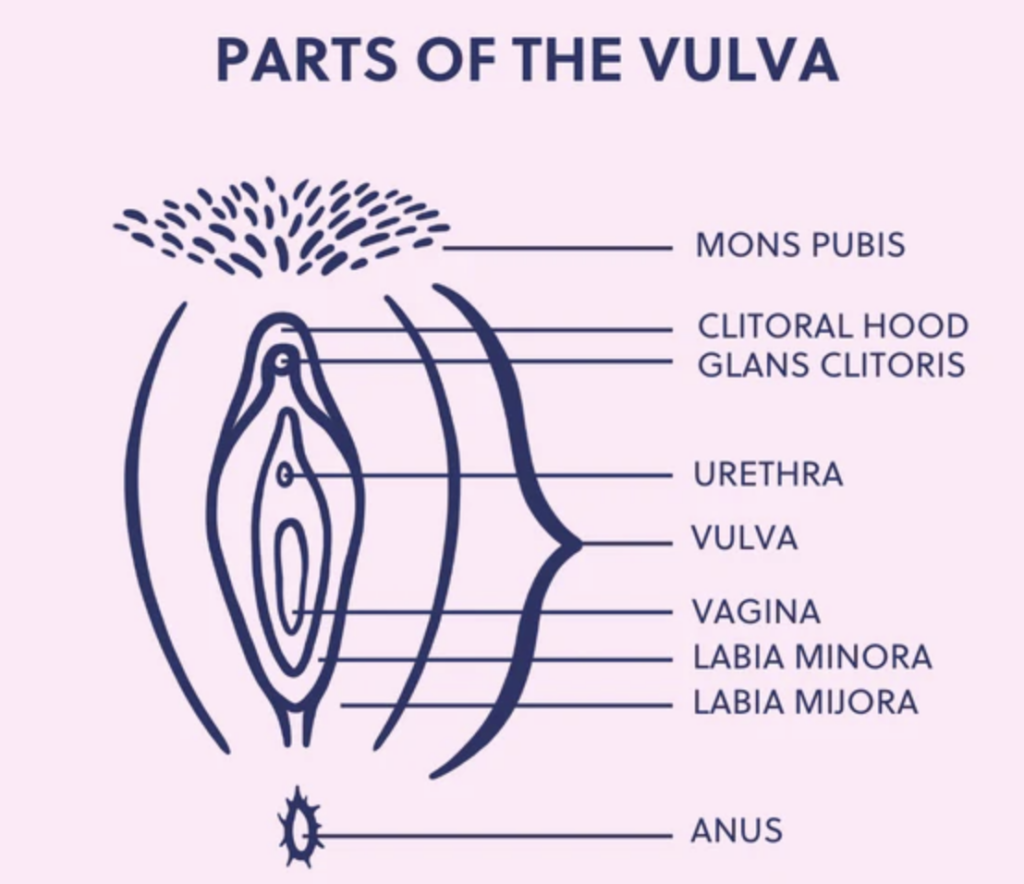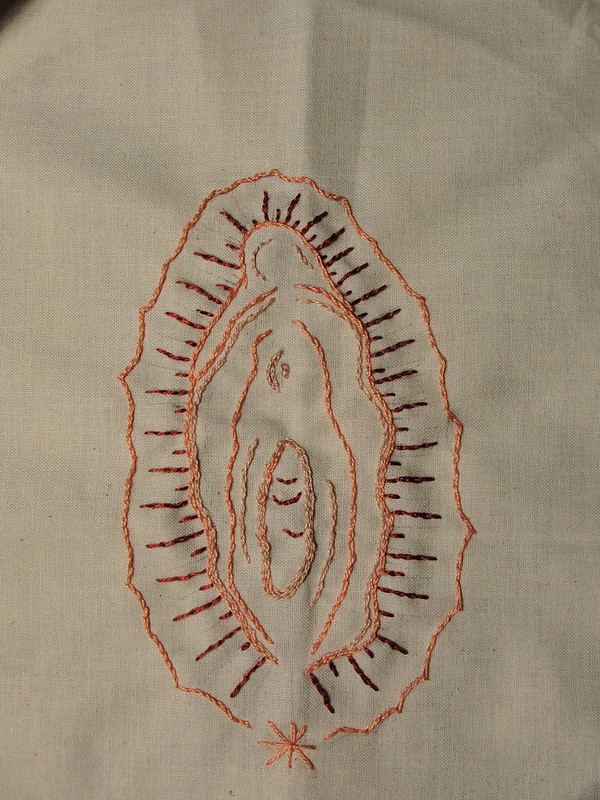
We live in a world so dominated by phallic imagery that the vulva—humanity’s first and most sacred symbol—has been almost completely obscured. Even the term for imagery of the vulva (yonic, in case you’re wondering) is obscure.
Once revered, the vulva’s inherent power in bringing forth new life made it dangerous, and men tried—and are still trying—to denude it of power, tame, control and erase it.
Let me take you on a tour of the yonic imagery omnipresent in our world. Once you can see it, the vulva is everywhere.
Don’t Call It a Vagina
The vagina and the vulva are not the same thing. The word ‘vagina’ means ‘sheath’ in Latin, as if the penis is a sword, and the vagina: a penis accessory. Referring to the vulva as the vagina is a verbal sleight of hand designed to make the labia and clitoris disappear.

Can you imagine this happening to men? No one is going to erase the penis. But culturally there is a huge ignorance about female genitals. This ignorance is not due to prudishness about sex but about female sexuality and female power. The porn industry shows no reluctance in portraying or fulfilling male sexual desires. Underlying this cultural squeamishness is a long history of fear of the vulva and the power of women to create life—hence the erasure.
But it wasn’t always this way.
The Wall of One Thousand Vulvas
The vulva is the oldest and most common object in prehistoric art. Carved in stone or painted on cave walls, images of the vulva were created around the world. In Queensland, Australia, you can visit a stoneface called “The Wall of One Thousand Vulvas.”
In contrast, paleolithic images of the penis are rarely found, either by themselves or in ithyphallic images—which is a fantastic way of saying pictures of men with dicks.
Why so many images of the vulva? Scholars believe early humans had no awareness of the role men play in fertility, while, in contrast, a woman’s role in creating life is unequivocal. The vulvas carved all over the world are invocations to this creative power. During a span of human existence tenfold the length of recorded history, the vulva was a primary object of devotion. Female bodies and our ability to bring forth life were the focus of reverence.
Let this understanding of the sanctity and power of the vulva seep into your cells, your souls. This is fundamentalism in its deepest sense.
Early humans had no awareness of the role men play in fertility. In contrast, a woman’s role in creating life is unequivocal. … Female bodies and our ability to bring forth life were the focus of reverence.
Veneration
Get ready. This part of the story gets juicy.
Female sexuality, symbolized by the vulva, was also revered. Nowhere is this reverence made more explicit than in the religion of Sumer, a civilization arising in Mesopotamia over 7,000 years ago. In one of the earliest hymns, the goddess Inanna celebrates the beauty of her genitals: “When Inanna leaned against the apple tree, her vulva was wondrous to behold. Rejoicing at her wondrous vulva, the young woman applauded herself.”
The reverence given to women and female sexuality is also clear in the central rite of Sumerian religion. The high priestess, representing Inanna, is seated on a throne, while the king, representing her consort, approaches. The liturgy reads: “The king goes with lifted head to the holy vulva / He goes with lifted head to the holy vulva of Inanna.”
Imagine what the king did when he got there.
As a hint, these rites were part of a seven-day long new year’s festival, which opened with the high priestess and king having sex and concluded with orgies meant to stimulate the fertility of the land, animals and humans.
Obviously this kind of sacred ritual is not what springs to mind now when we think of religion, but the Sumerian civilization lasted longer than Christianity has. In fact, religion itself was born out of awe for women and our sexual and generative powers. The word ‘venerate’ stems from the Latin venerari, meaning to worship or reverence. This word comes from the root veneris, meaning love, sexual desire and loveliness, from which the name Venus is derived.
Evidence of the centrality of women to religion can be found across the globe. As one example, yoni puja has been practiced in India for millennia and the yoni itself is considered a portal to the divine.
The Clandestine Vulva
If the first religious urges of humanity were to revere female creative and sexual power, represented iconically by the vulva, what happened? In a word, patriarchy.
Most scholars assume the earliest human societies were matrilineal, since a woman always knows the child she is birthing is hers. But in a patrilineal system, men need to control women’s sexuality to know conclusively that the child “belongs” to them. With the rise of patriarchal culture around 5,000 years ago, men began to assert control over women’s bodies and sexuality to pass power to their biological sons.
But such a powerful and universal symbol as the vulva does not simply disappear. For one thing, the vulva appears to have remained holy even amongst the patriarchal and misogynist Abrahamic faiths.
- The vulva of the Hebrew goddess was represented by a pit or pool of water in the heart of ancient Jewish temples.
- The Kaaba, the black stone at the center of the Islamic pilgrimage, was originally sacred to a goddess known as Al’Lat and is now enshrined in a silver vulva, which pilgrims ceremoniously touch.
- In Christianity, the vulva appears as a radiant oval, representative of cosmic creation, surrounding either Jesus Christ or the Virgin Mary. This yonic form is ubiquitous in Christian art, appearing as a flat oval in art and as a three-dimensional oval niche surrounding statues of sacred figures.
With the rise of patriarchal culture around 5,000 years ago, men began to assert control over women’s bodies and sexuality to pass power to their biological sons.

Vulva Power
In times of need, ancient women harnessed the occult power of the vulva by flashing their genitals. They believed the naked vulva could drive away evil spirits, frighten off wild lions, and repel attackers. This act existed in cultures across the globe as one of the oldest (if not the oldest) form of apotropaic magic, which is meant to banish evil.
Vulva power, however, is only frightening to men who do not revere female power. Between women, vulva displays were lighthearted and funny, and seeing the vulva conferred protection, fertility and healing.
Of course pussy-flashing was—and remains—a rare event. Instead, people adopted a multitude of symbolic representations of the vulva to harness its power. Some are natural objects, such as shells, flowers or fruit that look like vulvas. Others are talismans made in the shape of vulvas. The Viking apotropaic talisman below had a hole punch for easy attachment. My favorite yonic talisman is this jaunty badge of a vulva dressed as a pilgrim, carried by medieval Europeans on the Camino de Santiago.
Reclamation
The origins of the human experience are embodied in reverence for women and our bodies, which are both fully celebrated for sexual and generative powers, and also seen as sanctified portals to the cosmic realm. To say that this history calls into question cultural norms about gender, power, religion and sex is an understatement.
But knowledge of the past is useless unless we change the present. One important resource for reclamation is Indigenous women, many of whom still carry this knowledge as living traditions in their communities. Among the Haudenosaunee (Iroquois), the vulva is seen as the “sacred door of the mother.” The Mohawk Bear Clan Mother, Iakoiane Wakerahkats:teh, writes, “Inside Indigenous women’s world view, Mother is the LAW!…It is the mother who stands at the threshold of life and death. She is the canoe, the vessel, the rivers from which all life flows or not.”
Life and death, the physical and the metaphysical are all manifest in female sacred power, and the vulva is and will always be the sacred opening.
Up next:
U.S. democracy is at a dangerous inflection point—from the demise of abortion rights, to a lack of pay equity and parental leave, to skyrocketing maternal mortality, and attacks on trans health. Left unchecked, these crises will lead to wider gaps in political participation and representation. For 50 years, Ms. has been forging feminist journalism—reporting, rebelling and truth-telling from the front-lines, championing the Equal Rights Amendment, and centering the stories of those most impacted. With all that’s at stake for equality, we are redoubling our commitment for the next 50 years. In turn, we need your help, Support Ms. today with a donation—any amount that is meaningful to you. For as little as $5 each month, you’ll receive the print magazine along with our e-newsletters, action alerts, and invitations to Ms. Studios events and podcasts. We are grateful for your loyalty and ferocity.





